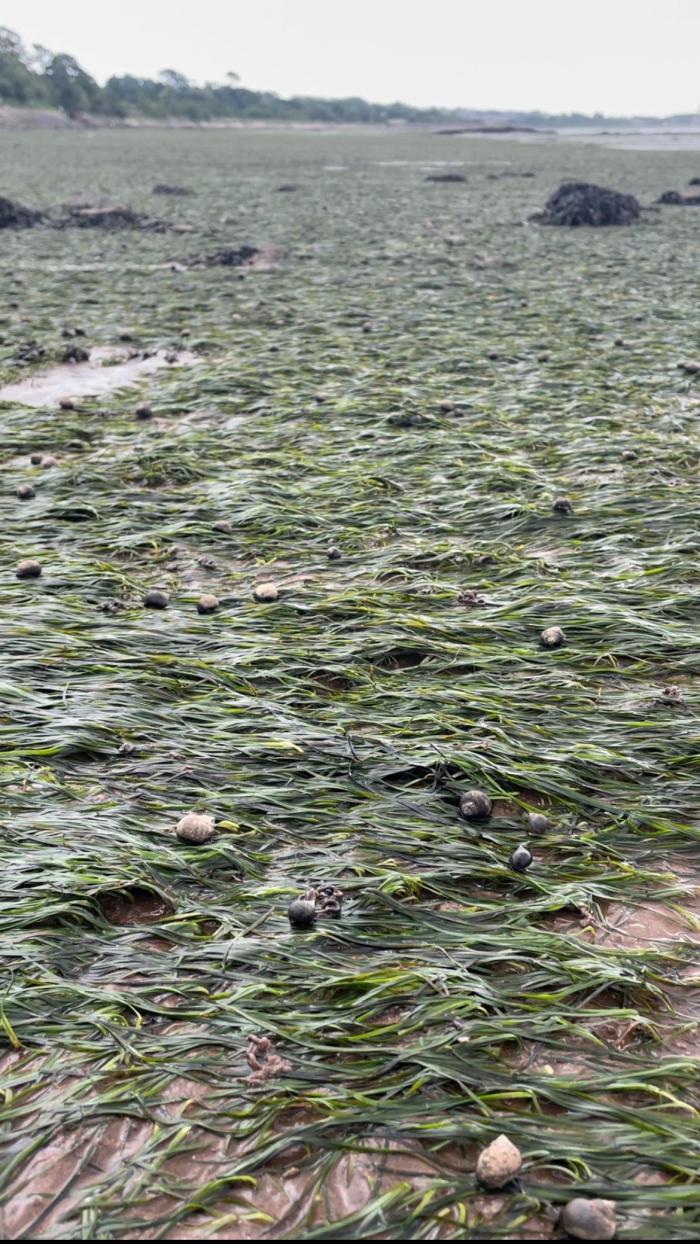The Exmouth Wildlife Refuge, an area marked by a line of yellow buoys spanning from the Imperial Recreation Ground up towards Lympstone, is again active from 15th September to 31st December. We ask that everyone including people, dogs and water craft, avoid this area including the foreshore, in order to allow birds to feed on the eelgrass beds without being disturbed.
This refuge is coupled with another area on the south-western corner of the estuary - the Dawlish Warren Wildlife Refuge. This refuge is active all year round, with sand bars providing an important high tide roost and saltmarsh and mudflats providing a rich feeding ground.
Our recent press release, presented winter 2022-2023 data from the British Trust for Ornithology’s (BTO) Wetland Bird Survey (WeBS). Despite the threat from bird flu, this data reveals that many waterbirds including oystercatcher, teal and black-tailed godwits are maintaining their numbers. From both these results and the 3 year monitoring study of the Exe Refuges published in 2021, we are confident that the Exe Refuges are making a positive impact to wildlife.
Unfortunately, some species, including brent geese are still suffering local declines. There has been a noticeable decrease in juvenile numbers in the past year, however it is difficult to know where in their journey the problem lies, with these birds migrating all the way from Siberia to the Exe. Overall, it remains vital we all continue to do everything we can to protect their feeding and resting grounds.
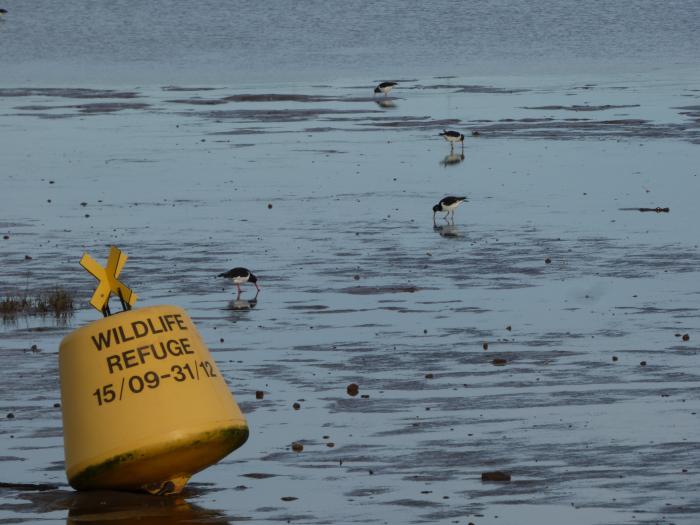
Goodbye swallows & hello over-wintering birds - the incredible feat of migration
Bird migration started about 1 million years ago, during the last ice age when northern Europe was much cooler than we now know it. Ice sheets covered much of the north and east, making it too cold for insects, which are the food source for the majority of birds, therefore making it impossible for most birds to live there. As a result, most species lived in southern Europe and Africa where it was warmer and there was more food.
As the ice age came to end and the ice sheets began to shrink up towards the Arctic, it left behind a new landscape with a short wet summer and long hours of daylight which was perfect for insect life. Birds started to explore this empty new landscape, drawn by the large numbers of insects to feed on, the long daylight hours, a lack of competition for food and nest sites away from other birds and relatively few predators. As the landscape filled up with birds, birds flew further north to find areas to live where there was less competition for food and nesting.
In the winter when the weather got cold, the insects decreased, so some birds headed back to their hunting grounds in the south. The ones that headed back fared better than the ones that stayed, meaning that migration developed as a means for survival, as birds that migrated lived longer than birds that didn’t.
You might wonder why birds don’t stay in southern Europe and Africa all year round as the weather is better? To start with, there are far fewer birds competing for the same nest sites in northern Europe, the warm wet summers produce large numbers of insects and the sun sets much later in the summer than it does in Africa giving parents more time to feed their chicks. In addition, in Africa there are many more hungry predators waiting to snap up young birds and their exhausted parents.
By taking birds from the best places for feeding to the best places for breeding, it helps them stay alive and produce young. Of course, migration is also risky, but the casualties are often sick or weak and migration ensures that their genes don’t pass to the next generation, so the population stays fitter and healthier.
Swallows and house martins come to the UK for the summer to feed and breed, and around now, we’re starting to see large flocks high in the sky and they get ready to make their long migration back to South Africa. The fact that they’re so tiny (a maximum weight of 25g, about 2 tablespoons of sugar!) makes their 8000 mile journey even more impressive. By using ringing and radio-tracking studies, we know they cover approximately 200 miles a day, at speeds of 17-22mph and mainly during daylight.
In contrast, Brent geese come to the Exe Estuary in the winter from Siberia, approximately 5000 miles away. They breed in the Arctic where there are lower numbers of predators and less competition for nest sites, and come to the UK to make the most of the mild climate and rich feeding grounds on the estuary.
As you can imagine, flying for so long and so far means that birds have lost a lot of the fat that they put on before they start the journey - birds will often weigh 50% less than they did when they set off. Scientific studies have shown that birds that are continually scared away by people and/or dogs will use up vital calories needed to recuperate from such a long journey. With this in mind, please continue to do all you can to avoid shore birds feeding and roosting on the Exe, whether they are residing inside or outside of their specially allocated wildlife refuges.
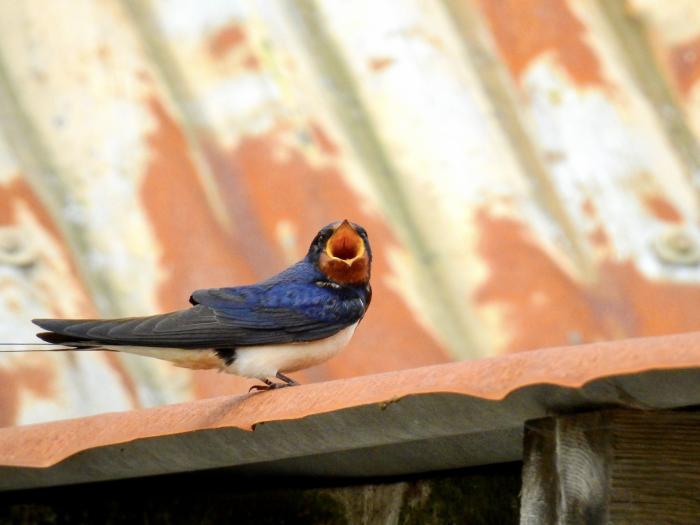
Let’s talk about fungi!
Although fungi can be seen all year around, autumn is the most abundant season. Following a damp August, many mushrooms made an early appearance. You may well have seen small, white puffballs masked by grass or bracket fungus, such as chicken of the wood, on the trunks of oak or cherry.
Mushrooms are the fruiting body of fungi and are in fact connected to something called the mycorrhizal network - an underground web of fungi roots, which allow plants to communicate sending signals and nutrients between one another. If you’d like to see the strands of mycelia which form this network, next time you see a damp log or leaf pile look underneath to the soil, and amongst many other soil-based creatures you should see their white root-like strands!
The largest living organism on the planet is in fact a fungus, which spans 3 miles underground. In the UK, there are more than 15,000 different species of fungi which can be found anywhere from a park, to heathland, to your bread bin at home! Fungi are vital to all life on Earth with numerous uses from medicine to land remediation. Fungi importantly provides food for many creatures including foxes, squirrels, birds, mice and insects, however, it's most well-known use perhaps is nutrient recycling - fungi decompose forest litter, waste products and other organisms processing them into soil (the primary substrate of life on Earth).
In recent years, it seems cultural depictions of fungi are transforming into a more positive light. Fungal networks are now being mapped for the first time, and a greater understanding of fungal networks are being encouraged.
Unfortunately, our planets fungal networks are being disrupted by modern agriculture which adds chemical fertiliser and ploughs the soil. This disruption interrupts the exchange between plants and fungi, impacting the entire food cycle. Nature reserves such as the Pebblebed Heaths and Dawlish Warren are areas where nature is put first, here land is managed sensitively and the fungal network has the opportunity to remain intact. It is important that we look after these special sites by following their codes of conduct, while of course enjoying watching the natural wonders such as fungi that these sites host.
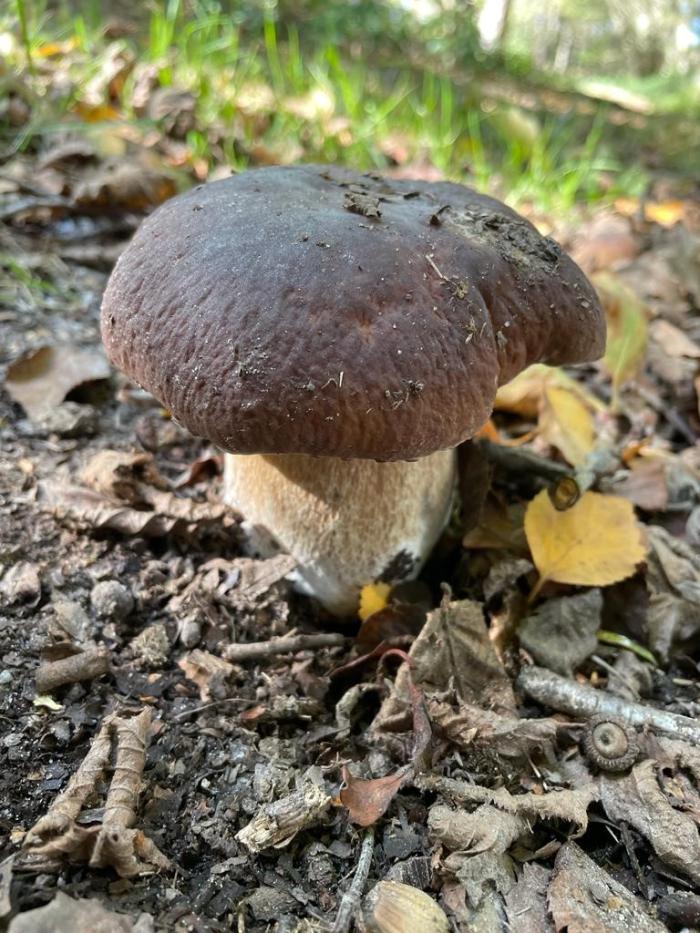
To learn more about fungi we recommend the following:
- Entangled Life, Merlin Sheldrake (Book)
- Fantastic Fungi, Paul Stamets (Film and Book)
- How trees secretly talk to each other - BBC News - YouTube (Short Video)
- Mushrooms, Roger Philips (Book)
- Complete Guide to British Mushrooms and Toadstools, Collins (Book)
- Join the Devon Fungus Group
What have we been up to this season?
Summer 2023 was a busy season of events, patrolling the sites at their busiest time of year and making community connections for our team of wildlife wardens. Events we attended this summer included: Lympstone Wildlife Festival, Gone Wild Festival, Devon County Show, Woofstock, Ridgetop Residents Day and Heath Week.
Our first education session with Exmouth Watersports summer camp was a great success, covering topics such as: the differences between parks and nature reserves, the Exe Wildlife Refuges, migration and of course local wildlife!
Are you a school, youth group or watersports centre, which would like our wardens to visit you to deliver an education session? Please get in touch with us to express your interest: sedwildlife@eastdevon.gov.uk
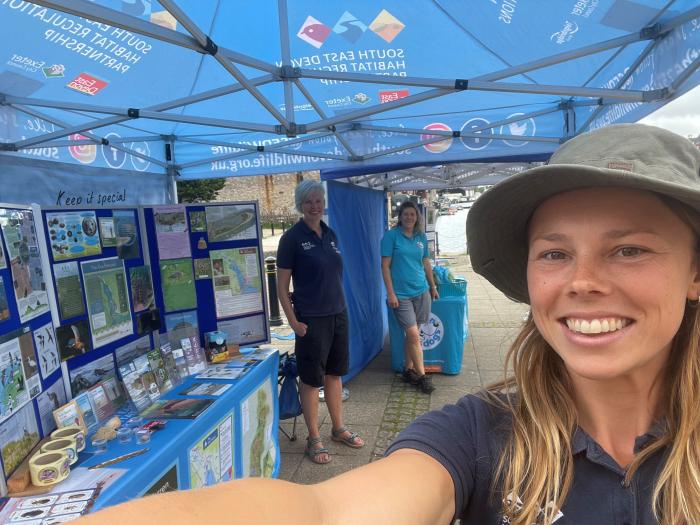
Dawlish Warren management update
Over the next year, groynes 16 to 19 will be removed from Dawlish Warren sand spit. These groynes are no longer serving their purpose of holding sand in place, and have also rotted, causing a health hazard. If walking near this groynes prior to removal, please proceed with extra caution.
Following a series of stakeholder engagement meetings at the Exe Forum, it has been decided that groynes 1-3 will continue to be maintained, whereas groynes 4-18 will all be gradually removed by 2049, as they lose their function. The geo-tubes and gabions will also be removed by 2049.
Ultimately, this approach should provide time for infrastructure upstream to be improved, including protecting the railway line, while allowing the sand spit to gradually evolve into a more sustainable position, orientating into a more south-north rather than a west-east direction.
To find out more about the management of Dawlish Warren and an update from Martin Davies, Environment Agency, see this presentation, delivered earlier this month.
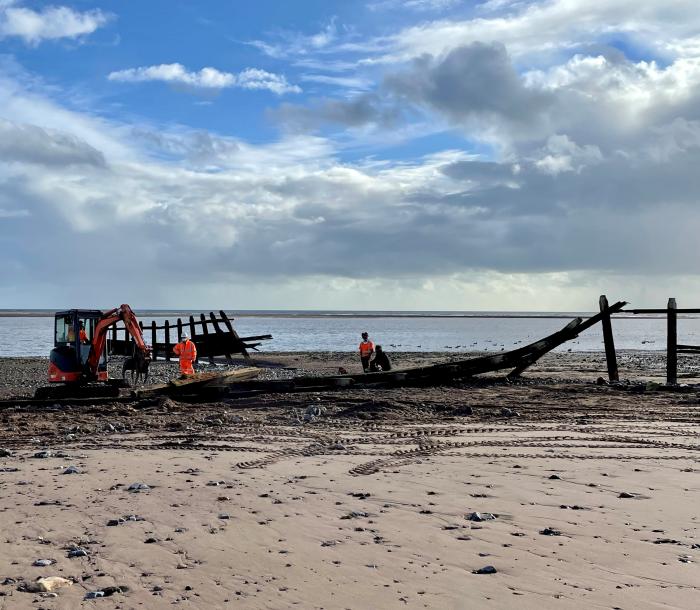
Lower Otter Restoration Project update
Our neighbouring project, the Lower Otter Restoration Project, has recently announced an exciting update. A new 70-metre footbridge has been craned into place and work is commencing to remove 70 metres of embankment, allowing tides to reach a large part of the Otter estuary for the first time in over 200 years!
This project, which is near completion will provide 55ha of habitat for many endangered species including migratory water birds. Do give it a visit if you can, keeping an eye out for their wonderful new signage or perhaps tying the visit into one of our nearby wildlife walks?
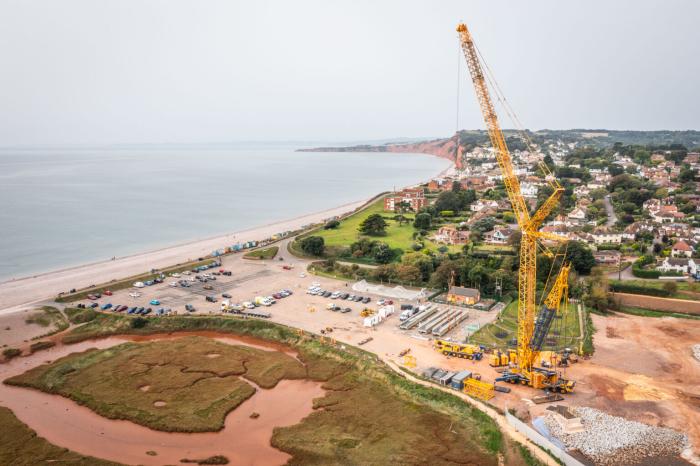
What to see this season:
Oystercatcher
The Exe homes over 2000 of this unmistakable bird each winter. Oystercatcher have a rather chirpy (and noisy!) call which can be heard around the coastal inlets of the estuary around Exmouth and Dawlish Warren. They can have 3 different types of bill: pointed, chisel and blunt. Each bill type is used to hunt in a different way and what’s more, an oystercatcher can even change their bill to suit their available food source!
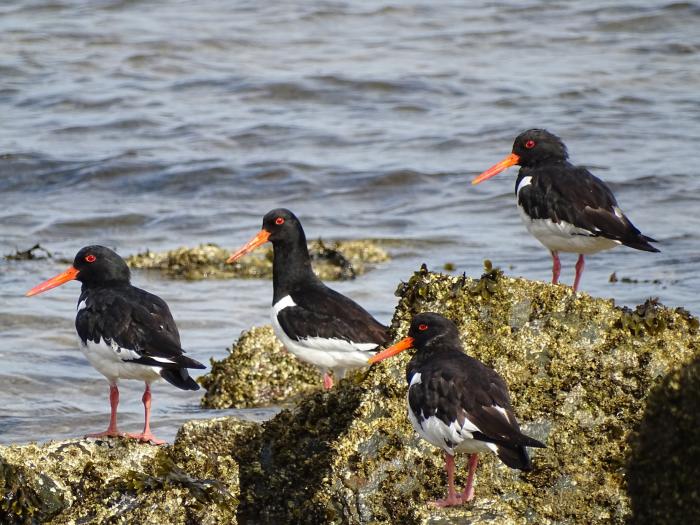
Blackberries
Ever wondered why you see less garden birds this time of year? Autumn is a time of abundance of wild foods such as blackberries. These provide an important food source to birds, encouraging them out of people’s gardens and into the more wild areas. A sufficient supply of berries is essential to both birds and small mammals, fattening them up before the harshest time of year – winter. Why don’t you consider planting a native berry-bearing species in your garden this year?
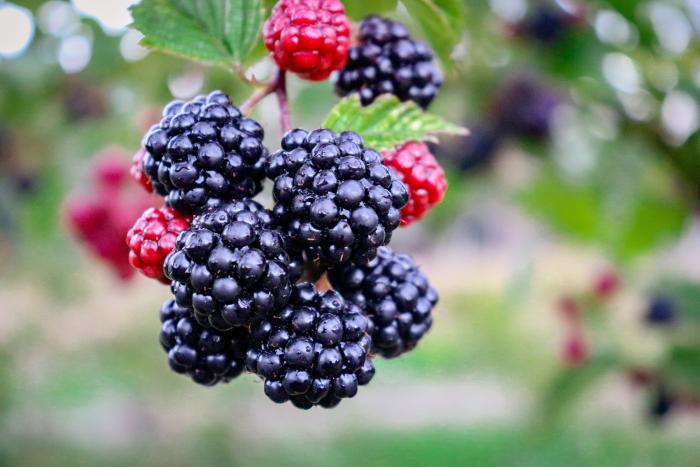
Dunlin
Despite being a red list species, of utmost conservation concern, dunlin are our most common wintering wader. They are often seen in large flocks feeding on the mudflats and swirling around in synchronized “now you see me, now you don’t” flight across Dawlish Warren Wildlife Refuge, flashing between their white underbelly and grey upper body. Dunlin have an energetic feeding behaviour, hurrying along while probing the foreshore. They often hang out with similar sized wading birds such as sanderling – so perhaps next time you see a group of birds running along the foreshore, see if you can identify which is which!
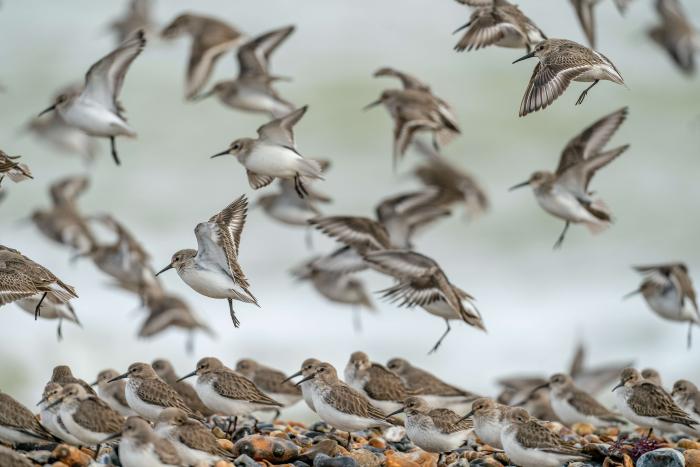
Eelgrass
Ever noticed the slimy green vegetation growing on mudflats in estuaries? Eelgrass, also known as seagrass, is a coastal plant that provides an important food source for waterbirds, particularly brent geese, wigeon and shelduck. As well as being an important food source, eelgrass provides a nursery for fish and crustaceans and is known to home seahorses too!
There are a number of eelgrass beds across the Exe, one of which spans across the Exmouth Wildlife Refuge, also known as the duck pond! At the moment, eelgrass on the Exe is at its lushest state- this won’t last long however because as the migrant birds arrive they graze upon the eelgrass until its short again.
